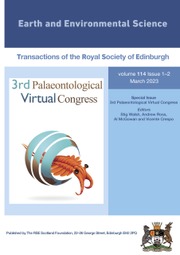Article contents
8.—A Stratigraphical Revision of the Old Red Sandstone of North-eastern Caithness
Published online by Cambridge University Press: 06 July 2012
Synopsis
The stratigraphy of the Old Red Sandstone between Latheron and Brough in north-eastern Caithness has been revised. Stratigraphical subdivision in this area is primarily based on variations in lithology but is supported by the recognition of distinct faunal assemblages. The terms Wick Flagstone and Thurso Flagstone are discarded both as Group and Formation names and in their place type sequences different from those given by the Survey are proposed on the basis of the more continuous exposure seen between Ellens Goe and Latheron in eastern Caithness and in the Ham/Scarfskerry area of northern Caithness. The revision has been facilitated by an analysis of the structure of the area which suggests that a variable c. east-west compression has been the dominant controlling factor in the development of the structure of Caithness.
As a result of the revision the position of the Achanarras Fish Bed is now clear. The Passage Beds Group is no longer considered a meaningful subdivision as it is partly overlain by and partly overlies this Fish Bed. The John o' Groats Sandstone Group is thought to probably overlie the Caithness Flagstones conformably.
The following major stratigraphical subdivisions are recognised:
D. John o' Groats Sandstone Group.
C. Upper Caithness Flagstone Group
(c) Mey Subgroup
(b) Ham-Scarfskerry Subgroup
(a) Latheron Subgroup.
B. Lower Caithness Flagstone Group (position of Achanarras Fish Bed)
(d) Robbery Head Subgroup
(c) Lybster Subgroup
(b) Hillhead Red Bed Subgroup
(a) Clyth Subgroup.
A. Sarclet Group.
A typographical device is used for formal description of formations and groups whose boundaries are truncated by faults.
Information
- Type
- Research Article
- Information
- Earth and Environmental Science Transactions of The Royal Society of Edinburgh , Volume 69 , Issue 8 , 1974 , pp. 167 - 201
- Copyright
- Copyright © Royal Society of Edinburgh 1974
References
References to Literature
- 44
- Cited by

